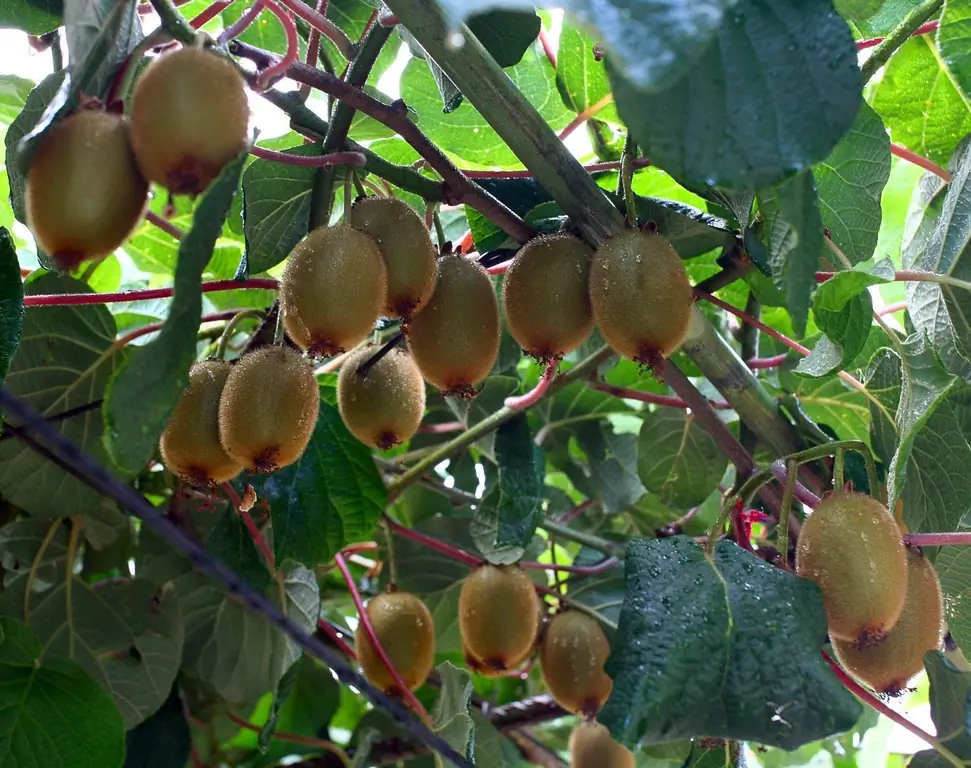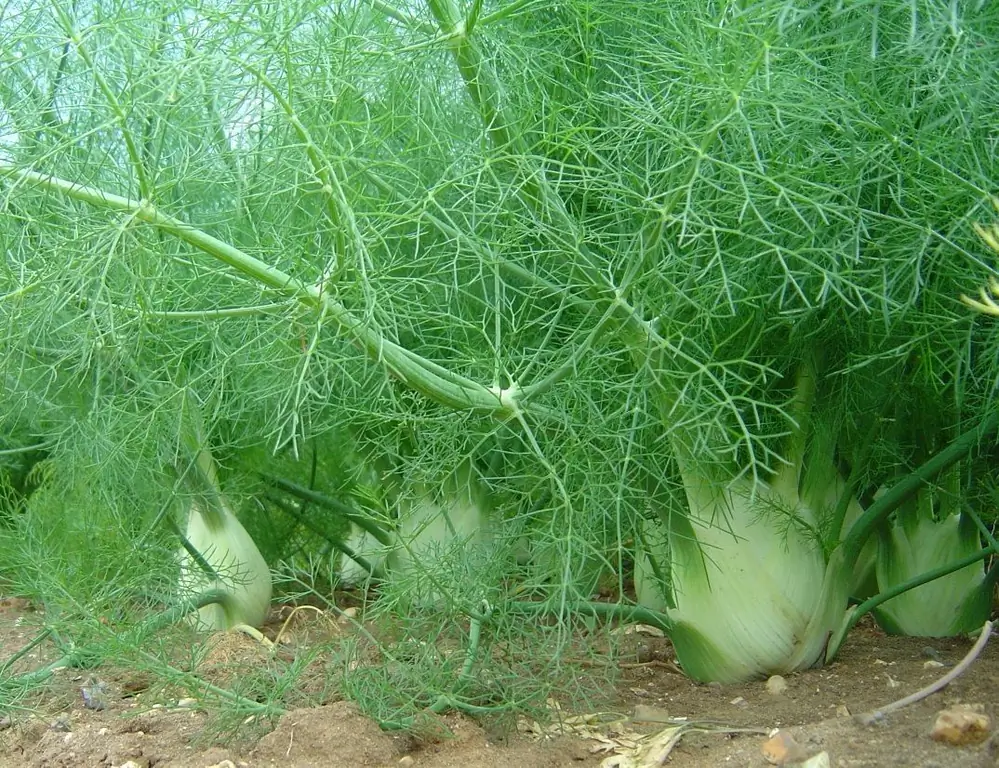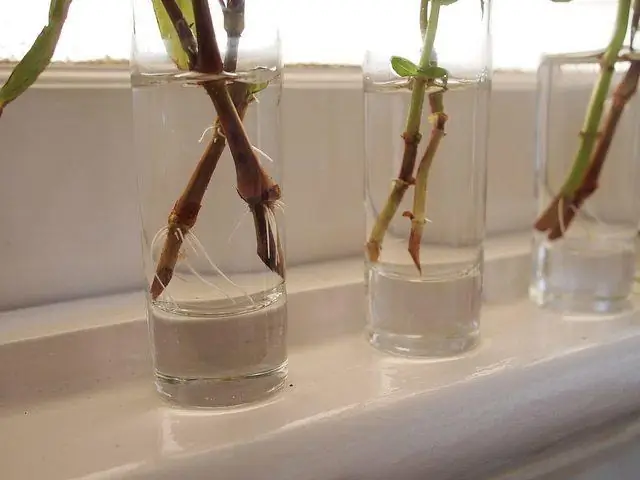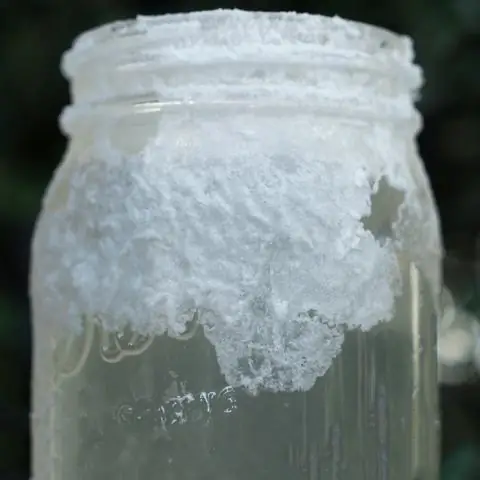
Table of contents:
- Author Bailey Albertson [email protected].
- Public 2023-12-17 12:53.
- Last modified 2025-01-23 12:41.
Exotic fruit at home: how to grow kiwi on your own

Once upon a time, kiwi was a rarity in our latitudes. Now this tasty and healthy fruit can be easily purchased at any grocery store or market. But how much more pleasant it is to grow a tree at home and get a harvest from it! So you can "kill two birds with one stone": decorate the room with a wonderful plant and provide your family with exotic fruits.
Content
- 1 Basic rules for growing
- 2 Growing kiwi from seeds
- 3 Rules for caring for kiwi grown from seeds
- 4 Propagation by seedlings and cuttings
- 5 Video about growing kiwi at home
Basic rules for growing
Growing kiwi at home is not difficult at all. But this task will require your attention, accuracy and the ability to wait.
Kiwi can be grown in several ways:
- from seeds;
- cuttings;
- root suckers.
Each of these methods has its own characteristics, which we will describe in detail. But there are some general rules regarding kiwi growing.
Kiwi is a vine, akin to grapes, which means that it has the same requirement. This plant loves a lot of warmth and sunlight. Therefore, he will need a place where there is a lot of sun and no drafts at all. However, do not forget that direct sunlight can burn the leaves of the plant. It is better if it receives light from the side. It's great if you can provide artificial vertical lighting for the kiwi. As you grow, turn the plant pot clockwise 10-15 degrees every two weeks. Thus, the vine will maintain a straight silhouette and develop an evenly dense crown.

Kiwi sprouts ready to dive
There are many varieties of kiwi, and almost all of them are suitable for self-cultivation at home. For the kiwi to start bearing fruit, you need to plant a female and a male plant - this is necessary for pollination. If you breed kiwi from seeds, you will have to wait for flowering to determine the gender of the vine. Usually kiwi begins to bloom at 6 years of age, sometimes earlier.
Growing kiwi from seeds is a rather painstaking task, it will require special attention from you. We will tell you about it in detail.
Growing kiwi from seeds
To grow a vine from seeds, you will need:
- ripe fruit;
- river sand, well washed;
- fine expanded clay, which will provide drainage;
- mini greenhouse (can be replaced with plastic wrap;
- prepared soil of a slightly acidic or neutral type for citrus fruits or roses (available in specialized stores).
A mixture of black soil, peat and sand can be used as soil for germinating seeds. When replanting seedlings into pots, this mixture will work fine too, but use less peat.

Seed-grown kiwi sprouts
Follow the step by step instructions to get a quality result.
- Mash the kiwi fruit until puree and remove the seeds from it. Rinse them thoroughly, mix with moistened river sand.
- In order for the seeds to germinate well, they need to be stratified. Keep the dishes with the mixture of sand and seeds for 2 weeks at a temperature of 10 to 20 degrees, then place in the refrigerator for 2-3 weeks.
- Lay small expanded clay on the bottom of the growing pots, pour soil on top. Mix the top layer of soil with a mixture of sand and seeds. Moisten with room temperature water.
- Place the seed pots in a mini-greenhouse (you can cover with foil or glass). Install them in a well-lit, warm place. Remember to spray and ventilate daily.
- As soon as the first shoots appear, start accustoming them to fresh air. Remove the cover from the greenhouse every day for a few minutes, gradually increasing the time.
- When the second pair of true leaves appears, make a dive and plant the plants in separate pots. At the same time, be careful: the root system of kiwi is very delicate, located on the surface, it is easy to damage it.
Rules for caring for seed-grown kiwi
To create conditions close to natural for your plant, you need to adhere to some requirements. Then the kiwi will grow healthy, beautiful, and be able to bring a good harvest.
Kiwi is a moisture-loving plant, it needs regular watering. The soil must be constantly moist. But you cannot overdo it: in a puddle of stagnant water, the root system of the plant will die. Use a spray bottle for watering, so it will be easier to measure out the required amount of water in order to evenly moisturize the soil and leaves.
Kiwi not only needs plenty of sunshine during the day, but also warmth. A window sill on the south side or a well-insulated balcony is suitable for him. If you are unable to provide such conditions, make an artificial backlight using fluorescent lamps.
To keep the vine growing strong and healthy, feed it periodically. To do this, you can use compost or biohumus once a year. Dig a small trench around the grown seedling and put fertilizer in it, sprinkling it with soil on top. After a few waterings, the nutrients will reach the lowest roots. Remember to check your plants regularly for fungi and pests.

Provide your plant with good support for proper growth
An adult kiwi is a fairly powerful vine that grows well. Do not forget about this when choosing a place for a plant pot. Over time, you will have to move the kiwi from the windowsill to where there is more free space. Be sure to make a good, solid support.
Kiwi is used to a cool winter and can shed its leaves for the winter. The plant should overwinter in a bright place at a temperature of +10 degrees, while it needs to be watered less often than usual. In the spring, the plant will give new leaves. During this period, you need to do pruning, removing sick, weak shoots. Experts recommend replanting kiwi every spring. Provide regular watering, feeding, plenty of light and warmth.
Propagation by seedlings and cuttings
Kiwi saplings are grown from seeds in the same way as described above. The only difference is that the seeds need to be sown in January. After two years, the kiwi variety you want can be grafted onto the hardened and grown seedling.
The grafting methods are the same as for other horticultural crops:
- in the cleft with a lignified cutting;
- in the cleft with a green handle;
- budding.
After that, you can even plant your kiwi outdoors. If you plan to keep the plant indoors, provide a large, deep container so that the root system has enough room to grow and develop.
You can grow seedlings from rooted cuttings. This method of vegetative propagation is excellent for green and lignified kiwi cuttings. The disadvantages include a low percentage of the output of rooted cuttings: at home, very few of them are obtained or not at all.

You can graft cuttings of any kind to kiwi seedlings
Growing kiwi in this way does not require much hassle and is no different from caring for a plant grown from seed. A seedling or cutting that has entered a period of active growth is not afraid of snow and frost, it is easily adaptable, so it can be planted in open ground. In the first years, it is enough to cover a liana for the winter, for example, with coniferous branches, if severe frosts often occur in your region.
Video about growing kiwi at home
As you can see, growing kiwi on your own is not difficult at all. This wonderful unpretentious plant will be a real decoration for your home and garden. Its fruits are not only tasty, but also beneficial, especially for women's health. If you have any questions on the topic of the article, ask them in the comments. Good luck to you!
Recommended:
Growing Fennel From Seeds (including Vegetable Seeds) At Home And In The Garden + Photo And Video

Practical tips for growing fennel from seed. Fennel species, varieties suitable for growing in the middle lane
How To Grow A Peach From A Stone In The Country Or At Home + Video

Growing a peach from a stone at home. Step-by-step descriptions of growing and transplanting methods. Plant care
How To Properly Grow A Crystal From Sugar At Home: Recipe + Video

Ways to grow sugar crystals at home. Necessary materials and tools, a detailed description of how to grow on a stick, string
How To Grow A Crystal From Table Or Sea Salt At Home + Video

How to grow a crystal from salt: a detailed description of the technology. Materials, tools, features and rules
How To Grow A Truffle At Home (white Or Black) + Video

Truffle: description, useful properties, cultivation possibilities. Conditions that allow you to grow a truffle on the site. Breeding and care technology
